Test / E-MTB Antrieb: Mit dem Sram Eagle Powertrain betritt nun auch der US-Amerikanische Komponentenriese den Bereich der E-MTB Antriebe. Das System setzt dabei auf den bekannten Drive S Mag Motor von Brose, bettet diesen jedoch in einem eigenen Ökosystem ein, das zahlreiche Features mitbringt. Wir konnten den Antrieb vor dem Marktstart bereits ausprobieren.
Schon seit Jahren wird gemunkelt, wann Sram wohl den ersten eigenen Antrieb für E-Bikes vorstellen mag – heute ist es nun soweit. Der Sram Eagle Powertrain bringt dabei viele Dinge mit, die so für Kenner der Branche zu erwarten waren, hat jedoch auch einige Features, die wohl nur die wenigsten auf dem Schirm hatten. Wie der Name des Systems bereits vermuten lässt, legt Sram großen Wert auf die Integration in den Eagle-Kosmos, Schaltung und Bedienung inklusive.
Alter Bekannter beim Motor
Durchaus überraschend ist im ersten Moment, dass Sram beim Motor – immerhin das Herzstück des Antriebs – auf eine bekannte Lösung setzt: Der Brose Drive S Mag sorgt innerhalb des Systems für Vortrieb. Obwohl der Mittelmotor des Automotive-Giganten nun schon seit einigen Jahren auf dem Markt ist, kann er dennoch weiterhin mit teils deutlich jüngeren Mitbewerbern mithalten und nimmt in einigen Gesichtspunkten noch immer eine einzigartige Stellung ein. In puncto Power liegt er auf dem Papier mit seinen bis zu 90 Nm sogar minimal über den Konkurrenten von Bosch, Shimano und Co; die von uns gemessene Maximalleistung zeigt, dass er sich ziemlich genau zwischen Bosch CX und Shimano EP8 einreiht.
Die nackte Leistung war jedoch nie das, womit sich der Brose Drive S Mag seine Sonderstellung auf dem Markt erarbeiten konnte. Es ist vor allem sein natürliches Fahrverhalten und sein konkurrenzlos geringes Betriebsgeräusch, das dem Motor trotz anfänglicher Defektanfälligkeit bis heute eine große Fangemeinde beschert. Diese Probleme aus den Anfangsjahren wurden mittlerweile sowohl bei Hardware als auch bei Software angegangen. Der im Inneren verbaute Antriebsriemen wurde verstärkt, Softwareanpassungen eliminieren Lastspitzen. Auf Letzteres hat man auch bei Sram in der Entwicklung der Software viel Wert gelegt, um maximale Zuverlässigkeit zu gewährleisten. Zudem hat man dem Antrieb natürlich seinen ganz eigenen Software-Stempel aufgedrückt, auch wenn weder bei der maximalen Leistung noch bei der Grundcharakteristik des Motors grundlegende Veränderungen vorgenommen wurden.
Nur zwei Unterstützungsstufen
Die vielleicht größte Veränderung zu bekannten Antrieben mit dem Brose Drive S Mag sind die Unterstützungsstufen des Sram Eagle Powertrain: Diese reduzieren die US-Amerikaner auf ein absolutes Minimum und bieten mit ‚Range‘ und ‚Rally‘ lediglich derer zwei an. Für diese Entscheidung gibt es wohl zwei Hauptgründe. Einerseits möchte man so die Bedienung des Antriebs so intuitiv wie möglich machen, zum anderen lassen sich die Bedienelemente so noch reduzierter gestalten – ein Knopf genügt, um zwischen den beiden Unterstützungsstufen zu wechseln.
Für die Bedienung bedient sich Sram im eigenen Portfolio: Der mit den Eagle Transmission Schaltungen vorgestellte AXS Pod fungiert als Schaltzentrale für den E-Antrieb, natürlich ebenfalls kabellos. Dabei genügt einer der beiden Knöpfe für das Wechseln der Unterstützungsstufe, der andere kann beispielsweise für die Bedienung einer AXS Reverb Sattelstütze genutzt werden.
AXS Bridge Display als Schaltzentrale
Dabei kommunizieren sowohl der AXS Pod als auch der Antrieb selbst mit der Schaltzentrale des Systems im Oberrohr, dem neuen AXS Bridge Display. Darin integriert ist ein leider recht kleiner Farbbildschirm, der Auskunft über den Ladestand des Akkus, die gewählte Unterstützungsstufe und auch den gewählten Automatik-Modus gibt. Leider lässt sich der Inhalt des Displays auch über die AXS App nicht individualisieren. Immerhin bietet das System jedoch eine ANT+ Schnittstelle, die weitere Informationen wie beispielsweise Kadenz oder Geschwindigkeit an kompatible Endgeräte von Hammerhead, Garmin, Wahoo und Co. überträgt.
Zwei Akkugrößen und Range Extender
Bei der Energieversorgung haben die Fahrradhersteller die Wahl zwischen zwei integrierten Akkus mit 630 Wh oder 720 Wh. Ihre Integration im Rahmen ist dabei dem jeweiligen Hersteller überlassen. So können sie fest verbaut werden oder entnehmbar über eine klassische Klappe oder als Slide-Out Lösung im Tretlagerbereich. Mit rund 3 kg für die 630 Wh Variante und rund 4 kg für den größeren Akku liegen die Gewichte im Bereich dessen, was man von den Mitbewerbern kennt – lediglich die Bosch Akkus sind ein paar Gramm schwerer.
Zusätzlich bietet der Sram Eagle Powertrain auch die Option auf einen Range Extender mit weiteren 250 Wh Kapazität. Dieser wird über eine eigene Halteplatte am Flaschenhalter befestigt – klapperfrei, so verspricht Sram. Anschließend wird der Zusatzakku per Kabel mit dem Ladeport des Bikes verbunden. Zu beachten ist hierbei jedoch, dass der Range Extender lediglich im Range-Modus verwendet wird. Konkret heißt das: Fährt man in der niedrigen Unterstützungsstufe, leert das System zunächst nur den Range Extender, dann den Hauptakku. Im Rally-Modus wird nur der Hauptakku angezapft – ist dieser leer, schaltet das System automatisch in den Range Modus und wechselt auf den Range Extender.
Automatik und Coast-Shift in Verbindung mit Eagle Transmission
Teil des Antriebssystems sind beim Eagle Power Train jedoch nicht nur die Komponenten rund um den Motor, sondern auch die Schaltung. Wie der Name bereits erahnen lässt, ist der E-Antrieb Teil des Eagle-Ökosystems und über das AXS Bridge Display findet auch eine Kommunikation zwischen allen Komponenten statt. Vorausgesetzt, ihr seid mit einer der neuen Eagle Transmission Schaltungen unterwegs, denn mechanische Schaltungen lassen sich ebenso wie die „alten“ AXS Schaltungen zwar mit dem Eagle Powertrain kombinieren, man muss jedoch auf die Automatik-Features verzichten.
Hierbei stehen vor allem zwei Funktionen im Rampenlicht: Auto-Shift und Coast-Shift. Bei aktiviertem Auto-Shift werden Gänge vollautomatisch, abhängig von Geschwindigkeit und Kadenz gewechselt. Manuelles Eingreifen ist natürlich ebenso möglich wie das vollständige Deaktivieren. Um eine auch für den sportiven Einsatz passende Automatik bereitzustellen, hat man bei Sram lange an den entsprechenden Algorithmen gefeilt. Als Fahrer hat man zudem die Möglichkeit, die Zielkadenz in insgesamt sieben Stufen einzustellen. Ausgehend vom Standard-Setting lässt sich diese direkt am Bike sehr simpel bis +3 bzw. -3 anpassen, je nach Vorlieben und Gelände.
Nicht weniger spannend ist die Coast-Shift Funktion, die man unter dem Namen Free-Shift bereits von Shimano und der neuen XT Di2 kennt: Damit lässt sich auch dann der Gang wechseln, wenn man nicht in die Pedale tritt. Hierfür treibt der Motor das Kettenblatt kurz an, damit am Hinterrad die Kette auf das entsprechende Ritzel wandern kann. Als Fahrer bekommt man davon nichts mit – ein wirklich cooles Feature, beispielsweise um bereits während der Abfahrt den richtigen Gang für den Gegenanstieg einzulegen. Die Sram Coast-Shift Funktion ist in Verbindung mit Transmission Schaltungen immer aktiviert, auch wenn man die Automatik nicht nutzt.
Updates und Individualisierung per AXS App
Verbindet man den Sram Eagle Power Train mit der bekannten AXS App am Smartphone, kann man hier unter anderem die Unterstützungsstufen individualisieren. Hier kann man sowohl den Unterstützungsfaktor als auch die Maximalleistung für beide Unterstützungsstufen festlegen. Im Range Modus ist die Leistung dabei auf maximal 540 W gedeckelt. Auch das Belegen der Knöpfe am AXS Pod lässt sich hier ebenso vornehmen wie Softwareupdates für den Antrieb.
Vier Modelle zum Start mit Sram Eagle Powertrain
Zum Start des neuen Antriebssystems werden vier E-MTBs mit dem Sram Eagle Powertrain erhältlich sein. Neben dem von uns gefahrenen Propain Ekano CF wird es ein neues Transition Repeater und auch E-MTBs von Gasgas und Nukeproof geben. Details zu den einzelnen Modellen wird es erst in den kommenden Wochen geben – gemein haben sie jedoch alle ihre sportliche Grundausrichtung und die großen Federwegsreserven.
Der Sram Eagle Powertrain im ersten Test
Vor den Haustüren von Sram in Schweinfurt konnten wir den neuen Sram Eagle Powertrain bereits für eine ausführliche Trail-Runde testen. Hierbei fällt zunächst auf, dass der Brose Drive S Mag nach wie vor ein wirklich überzeugender Motor ist. Vor allem die angenehme Geräuschkulisse ist ein Segen: Unser Testbike, das Propain Ekano CF, war wohl eines der leisesten E-MTBs, das wird in den vergangenen Monaten überhaupt gefahren sind. Bergauf entlockt selbst hohe Leistung und hohe Kadenz dem 2,9 kg schweren Motor nicht mehr als ein leises Summen, bergab beschränkt sich die Geräuschkulisse auf das satte Abrollen der Reifen – so muss das sein!
Auch in puncto Leistung kann der Drive S Mag auch 2023 mit der Konkurrenz mithalten, auch wenn er eher sanft und natürlich als brachial zu Werke geht. Wer hier also direkt von Antritt weg enorme Beschleunigung erwartet, wird vielleicht etwas enttäuscht sein. Die Leistung ist jedoch vorhanden, auch bei niedriger Kadenz. Dass das System nur zwei Unterstützungsstufen bietet, lässt uns zwiegespalten zurück. Einerseits ist die Bedienung so wirklich herrlich intuitiv und in den allermeisten Fällen genügend zwei Stufen auch vollkommen – zumal man diese über die AXS App auch konfigurieren kann. Hin und wieder kommt man dann jedoch aber schon in die Situation, wo man in der einen Stufe etwas unter und in der anderen etwas über der „Wohlfühlunterstützung“ liegt.
Für die meiste Zeit der ca. zwei Stunden langen Testrunde waren wir mit aktiviertem Auto-Shift unterwegs. Hier fällt direkt auf, dass die Automatik generell eher langsam auf wechselnde Anforderungen reagiert. Das ist jedoch keineswegs negativ gemeint: Würde die Schaltung jede noch so kleine Schwankung in der Trittfrequenz, etwa in einer kleinen Senke, mit Gangwechseln quittieren – das Ergebnis wäre ein hektisches und wenig natürliches Fahrverhalten. Stattdessen wartet das System recht lange, bis es die Kette auf ein passendes Ritzel befördert. Das kann durchaus auch dazu führen, dass man in einem Gegenanstieg zunächst einige Meter in einem zu schweren Gang unterwegs ist. Hier kann man entweder manuell eingreifen, oder sich für eine kurze Zeit auf die Motorunterstützung verlassen.
Alternativ lässt sich die Ziel-Trittfrequenz dank der individuellen Bedienung auch rasch während der Fahrt oder gar auf dem Trail anpassen. Davon haben wir einmal Gebrauch gemacht, als die Automatik in einem Steilstück nach unseren manuellen Gangwechseln immer wieder in einen eher zu schweren Gang gewechselt hat. Insgesamt ist die Automatik-Performance überraschend gut, selbst im Gelände: Ob sportive E-Mountainbiker diese im Gelände aber wirklich nutzen? Das wird sehr individuell sein. Ein Feature, das aber immer praktisch und nie störend ist, ist der exzellent funktionierende Coast-Shift. An das Schalten während der Abfahrt gewöhnt man sich fast schon erschreckend schnell.

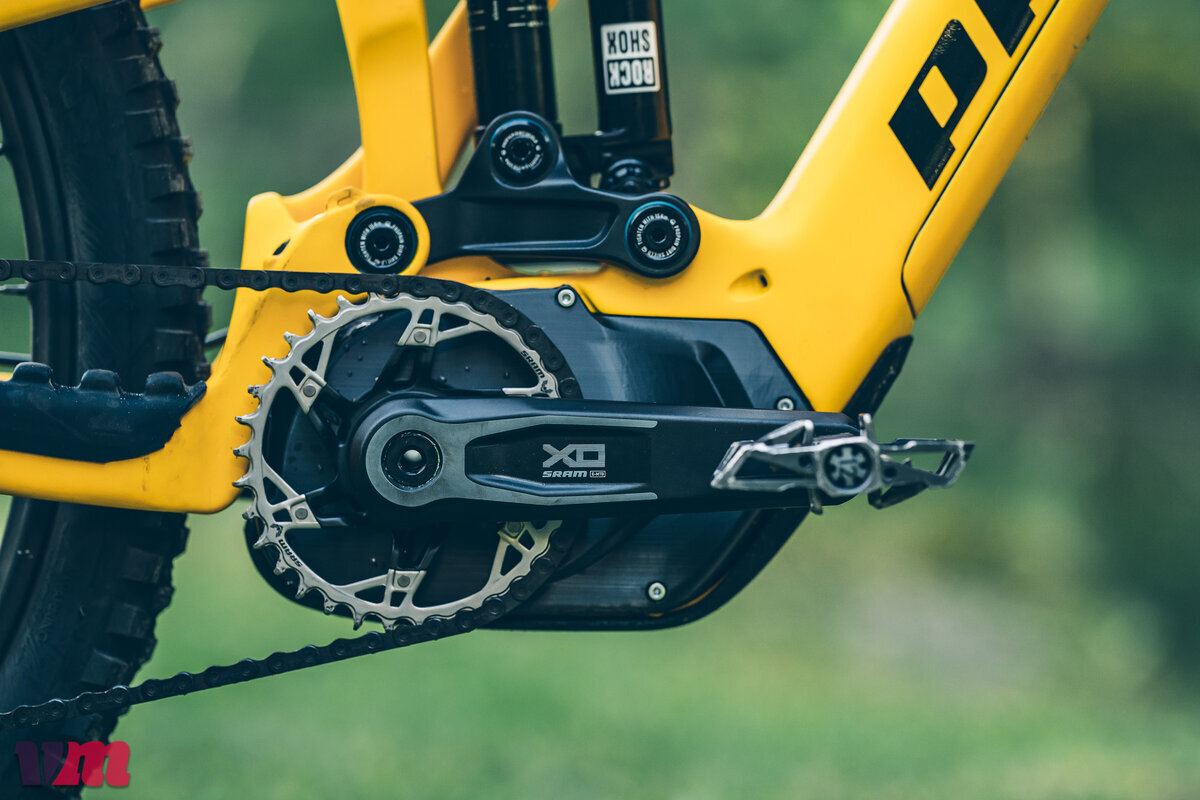
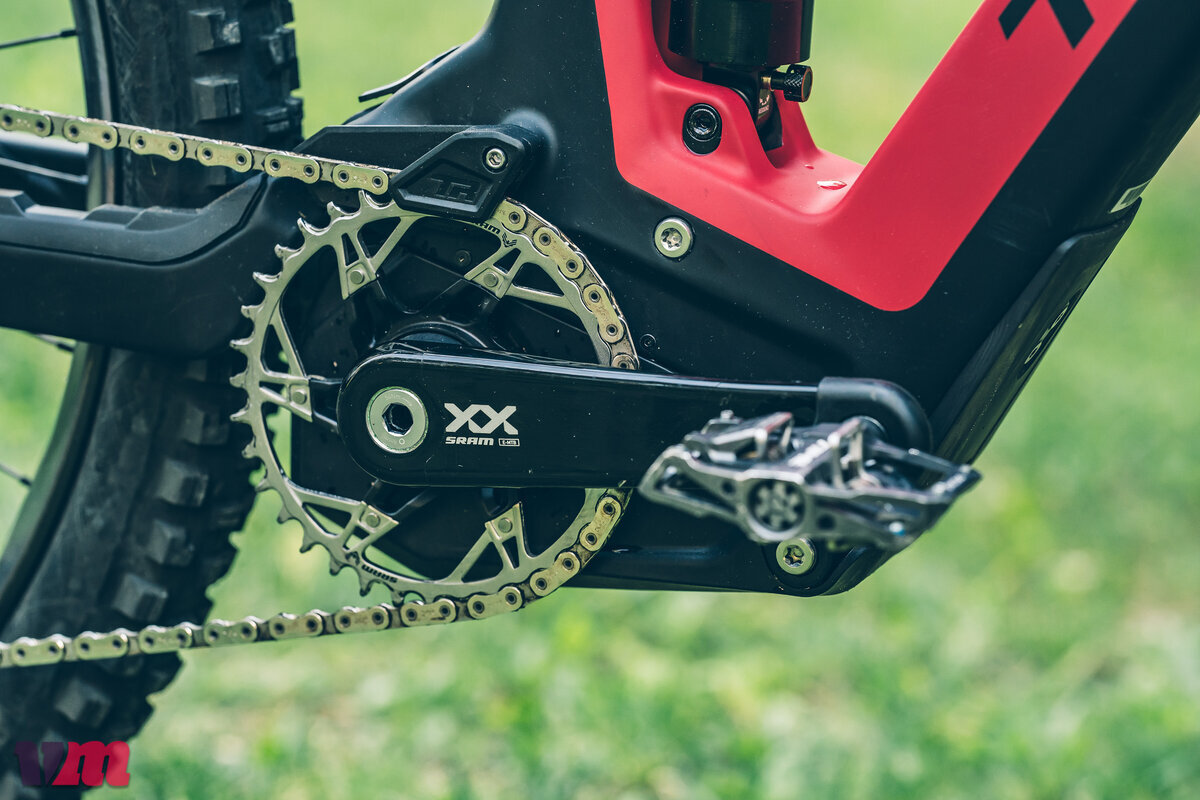


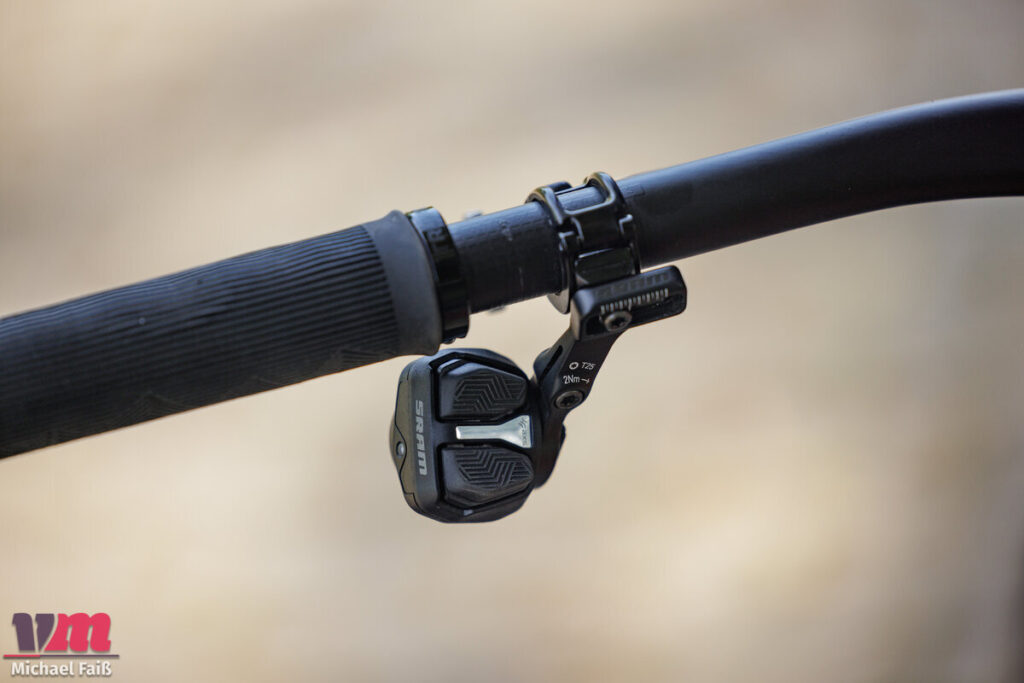
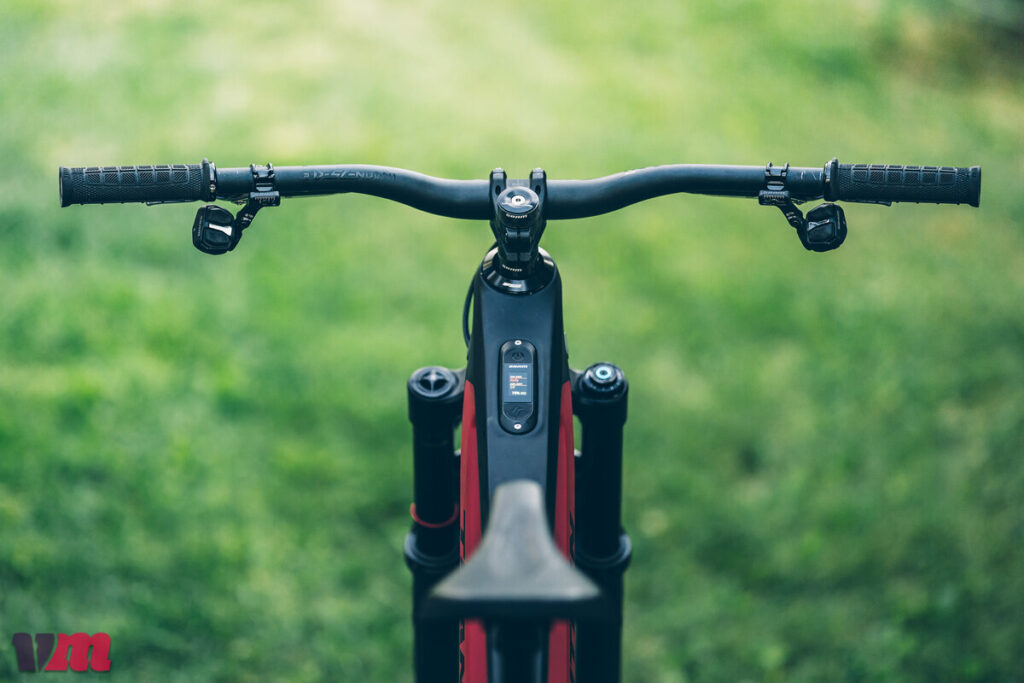


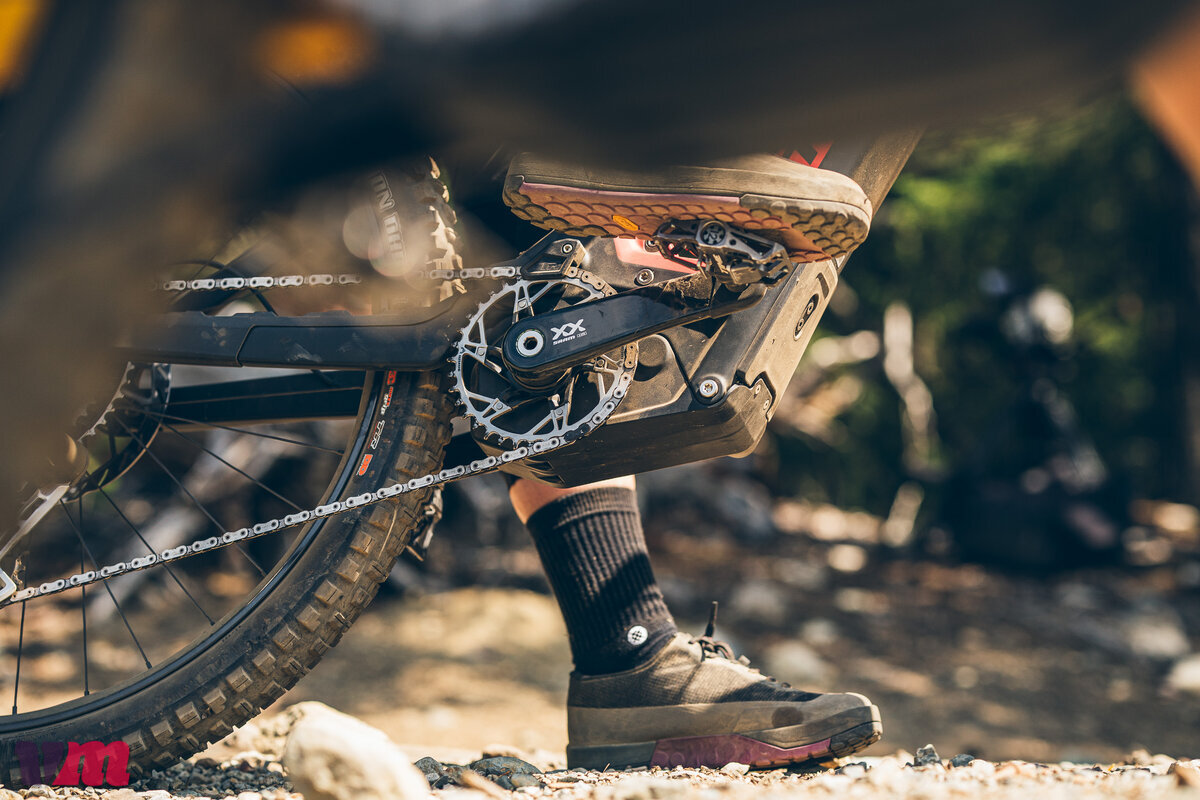
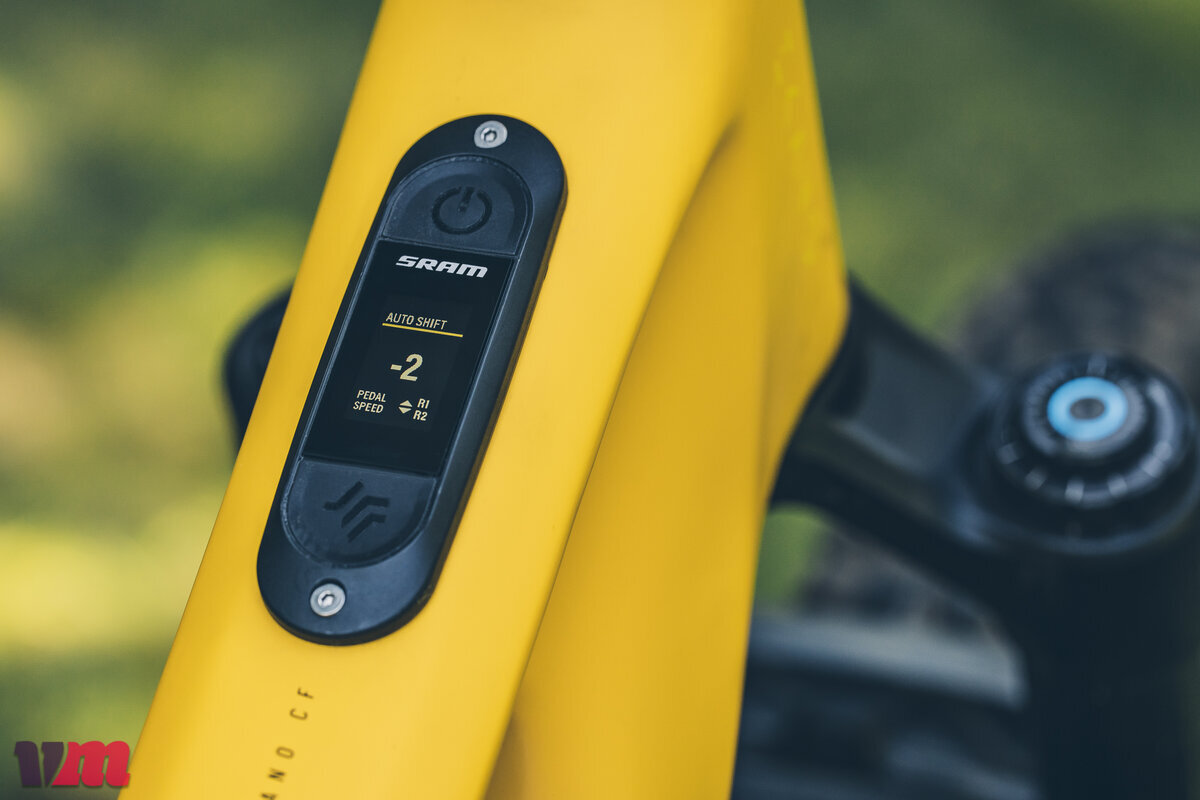
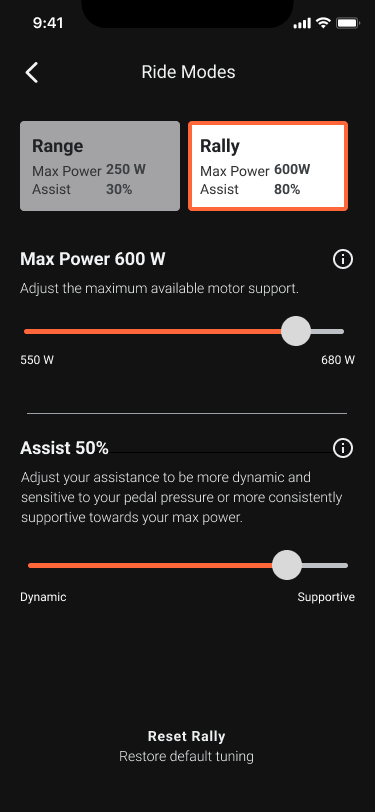
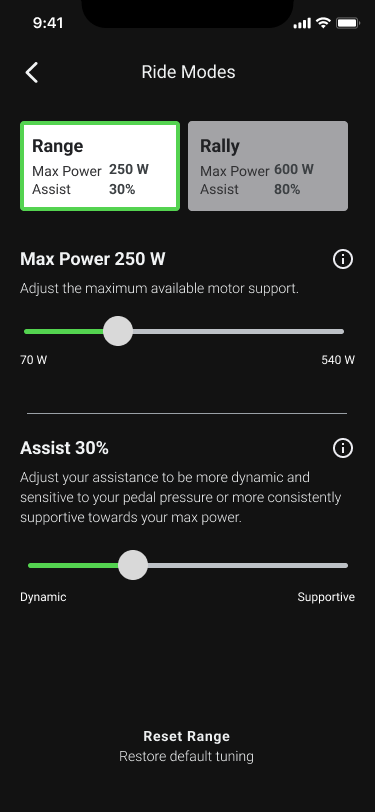
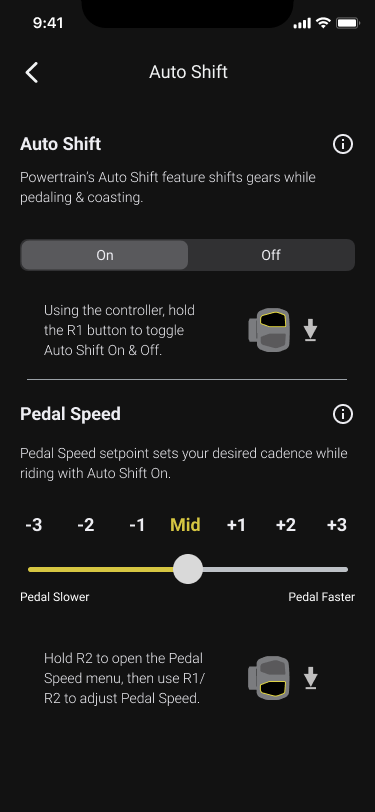

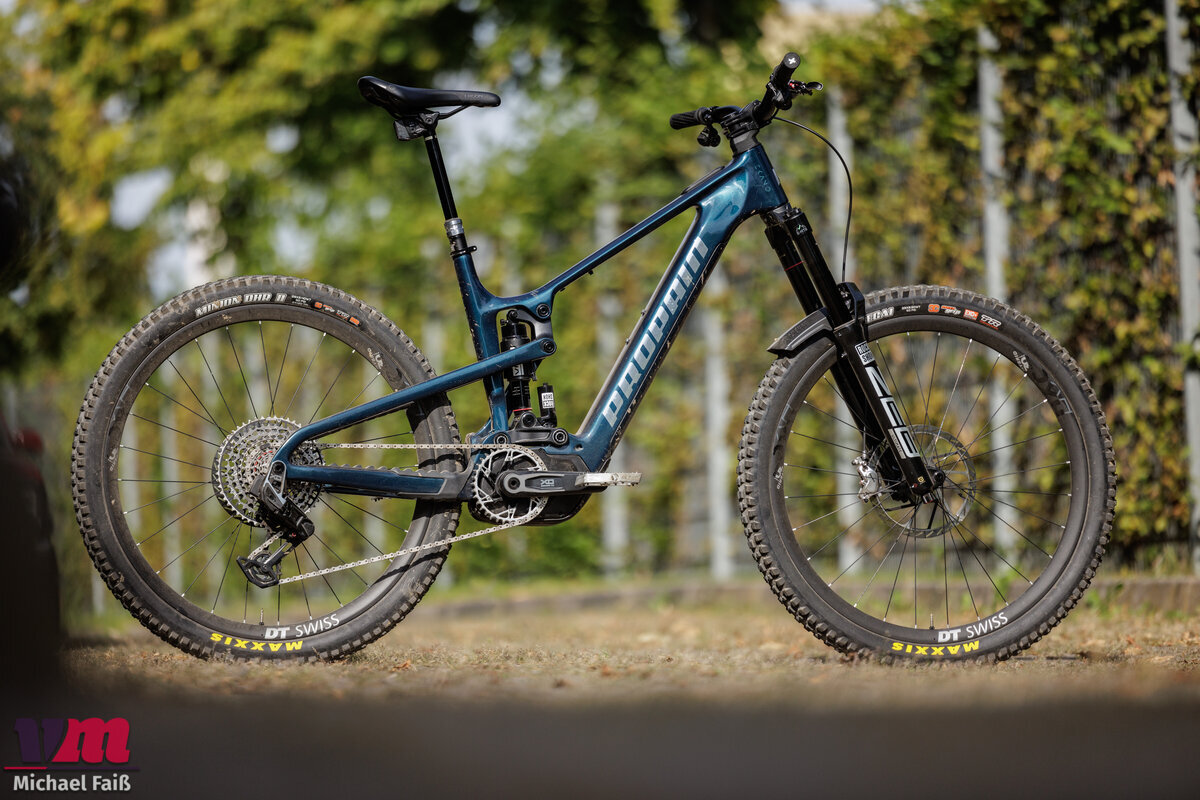


Schreibe einen Kommentar